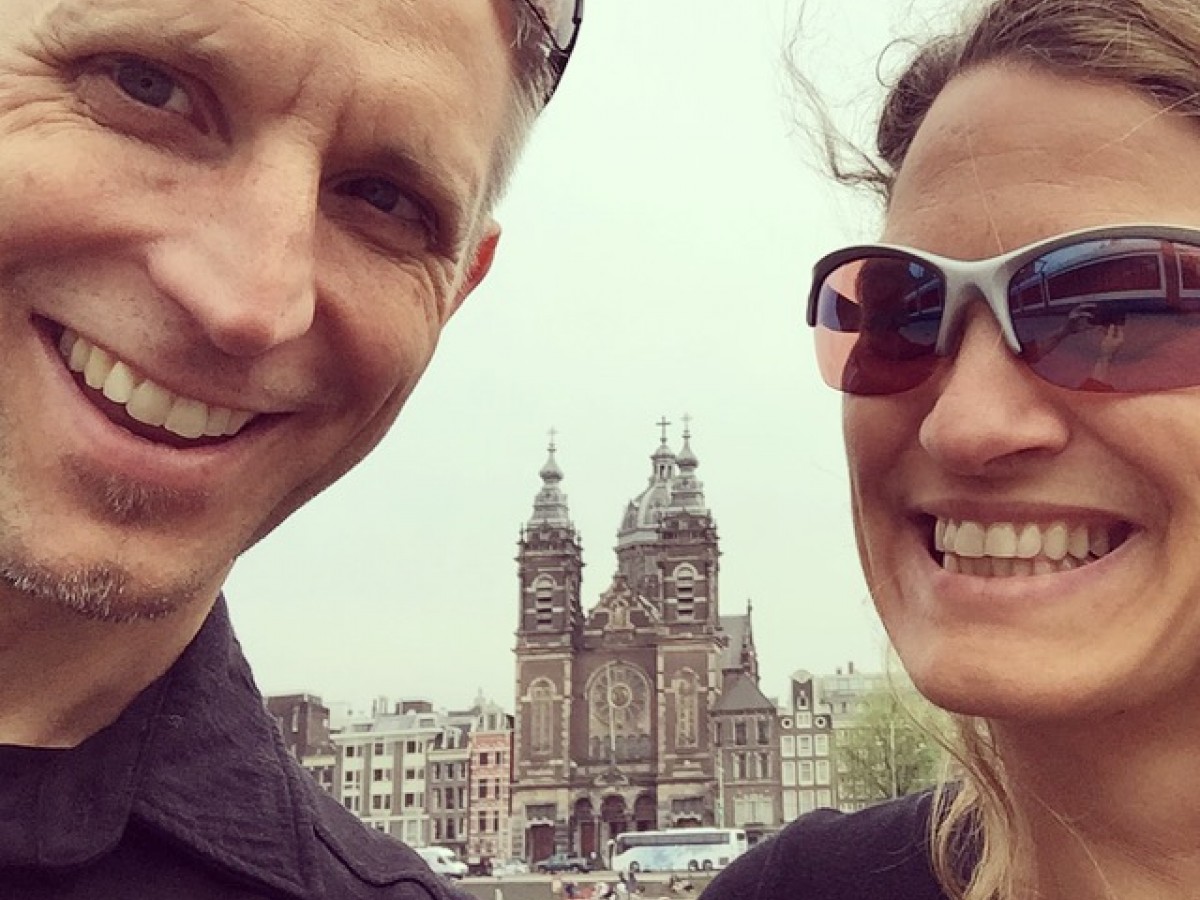20 Years of Flourishing: Our Anniversary Trip to Holland and France.
It was time. We hadn’t done anything outlandish since having kids. It was time to put a stake in the ground. It was our 20-year anniversary.
Why not do something special? Why not get out of Dodge, way out, so far out that we couldn't even understand what people were saying, where we could be lulled into sweet mystification by the sound of something as beautiful and incomprehensible as...French, for example.
So we did it. We took a little trip to Holland and France. For the history, for the romance, for the food, for the heck of it.
And we kept a journal.
Here is a glimpse of what we did and what we (I) thought about it, not only for your enjoyment, but also by way of apology—this is why I’ve been offline for so long.
Now: sit back, relax, and enjoy a slice of the Old World...
Days 1-3
Amsterdam, Holland.
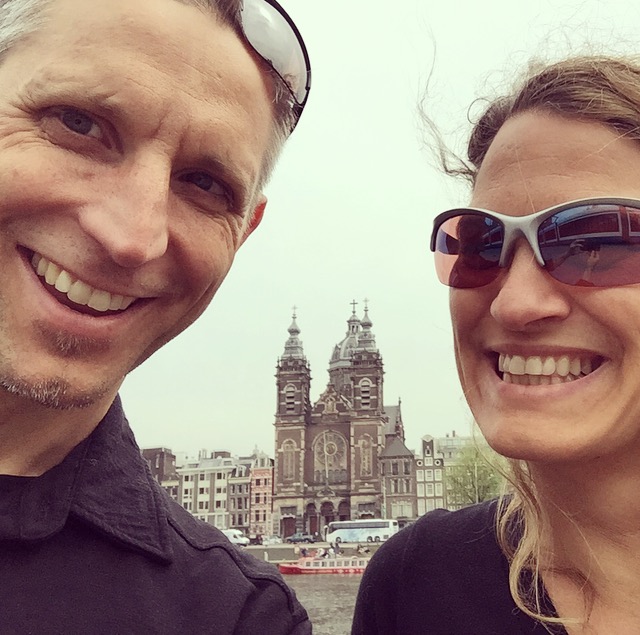
We arrive on a gorgeous afternoon. It is 70 degrees. The soothing scent of the sea and the muffled flapping of pigeons surround us. We stroll aimlessly through the city's quiet corners and waterways.
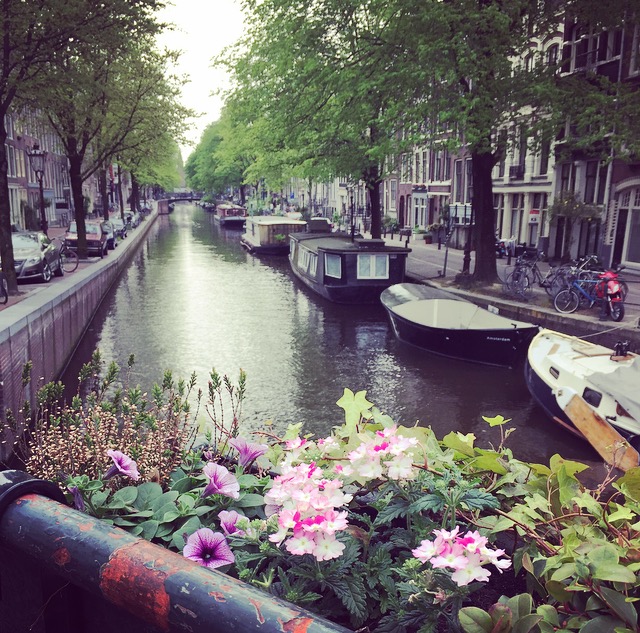
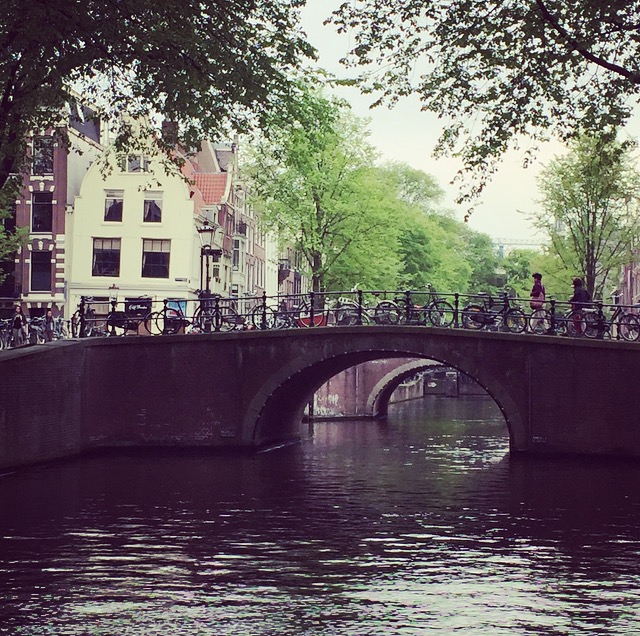
There are 63 miles of languid waterways in Amsterdam and 1250 bridges. We float through just a fraction of them. It is one of the quietest big cities I have ever visited. Maybe it's all the bikes, maybe it's all the cars that never honk, maybe it's the canals that suck up the sound and drain it away to the sea. It is serene.
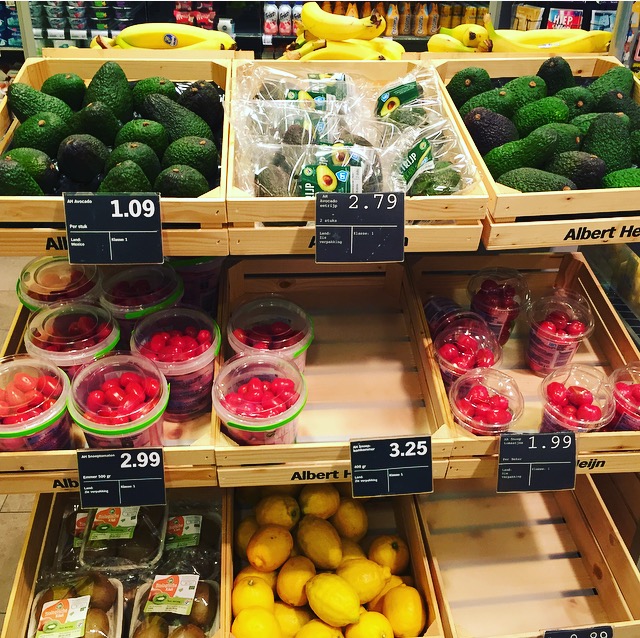
If you want to eat a diet made in a kitchen and not in a laboratory, Dutch supermarkets will support you—even in the Airport (as shown here). Albert Heijn Supermarkets are everywhere. These are a bit like Trader Joe's but with even more real food—like real Greek Yogurt.
Albert Heijn's Greek yogurt is made with only 3 ingredients: cream, whole milk, and cultures, nothing else—no fillers, no carbohydrate thickeners, no cheap powdered milk thickeners, no preservatives, no stabilizers, no added sugars, nothing. I am enchanted. It is delicious without deception; it has something like 16 grams of fat for every 4 grams of sugar (lactose), which means that even a moderately lactose-intolerant person like myself can eat a whole serving without discomfort.
(I have since been unable to find a Greek yogurt in the States that is this unapologetically rich. Strauss Family Creamery makes one that is close. It lacks cream, but at least it has more fat than sugars, which is more than you can say for the other "Greek" yogurts on our shelves. In general, I’m afraid we are still using a lot of science and “nutritionism”—not to inform our food, but to deform it.)
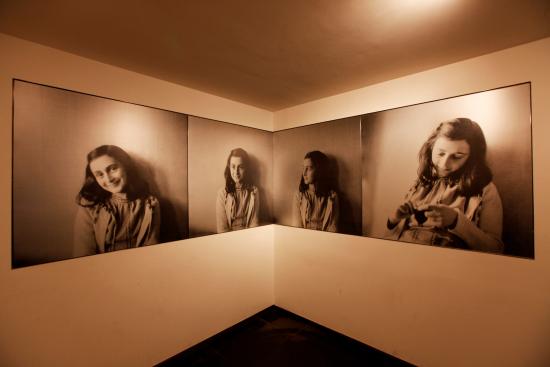
Anne Frank: she and her family hide under the Nazi's noses for 2 years. They are caught just a few months before the allies liberate Holland. She dies in Auschwitz. Her diary survives as does her house and hiding place; it is now an unassuming and moving memorial with the longest waiting lines in Amsterdam.
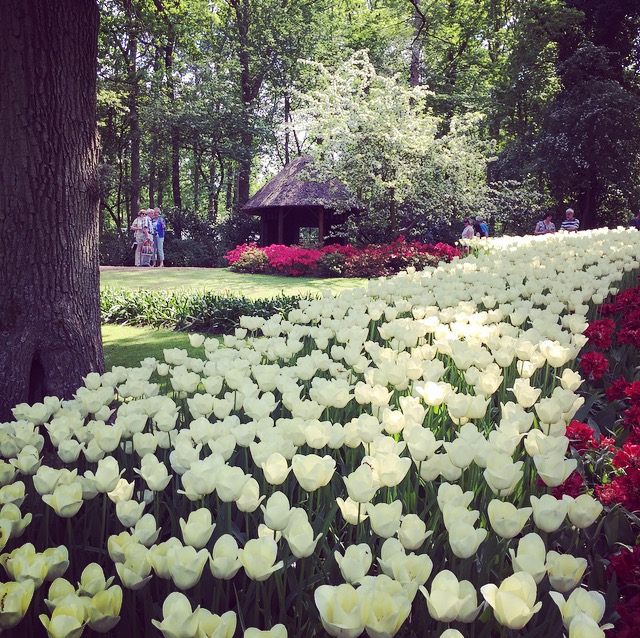
Holland is as flat as Kansas, but greener. In the spring, the landscape turns prismatic, churning with windmills and color and oceanic mists. Blue and yellow trains glide through checkerboard fields and swaying white birch trees soften the ever-steady wind. Every farmstead is a canopy of beech and old oak. 70 million tulips bloom here in Keukenhof from April through May and we are among the last to see them—beautiful, riotous, temporary things that waver on dusky bulbs the size of turnips.
Day 4
Amboise, France.
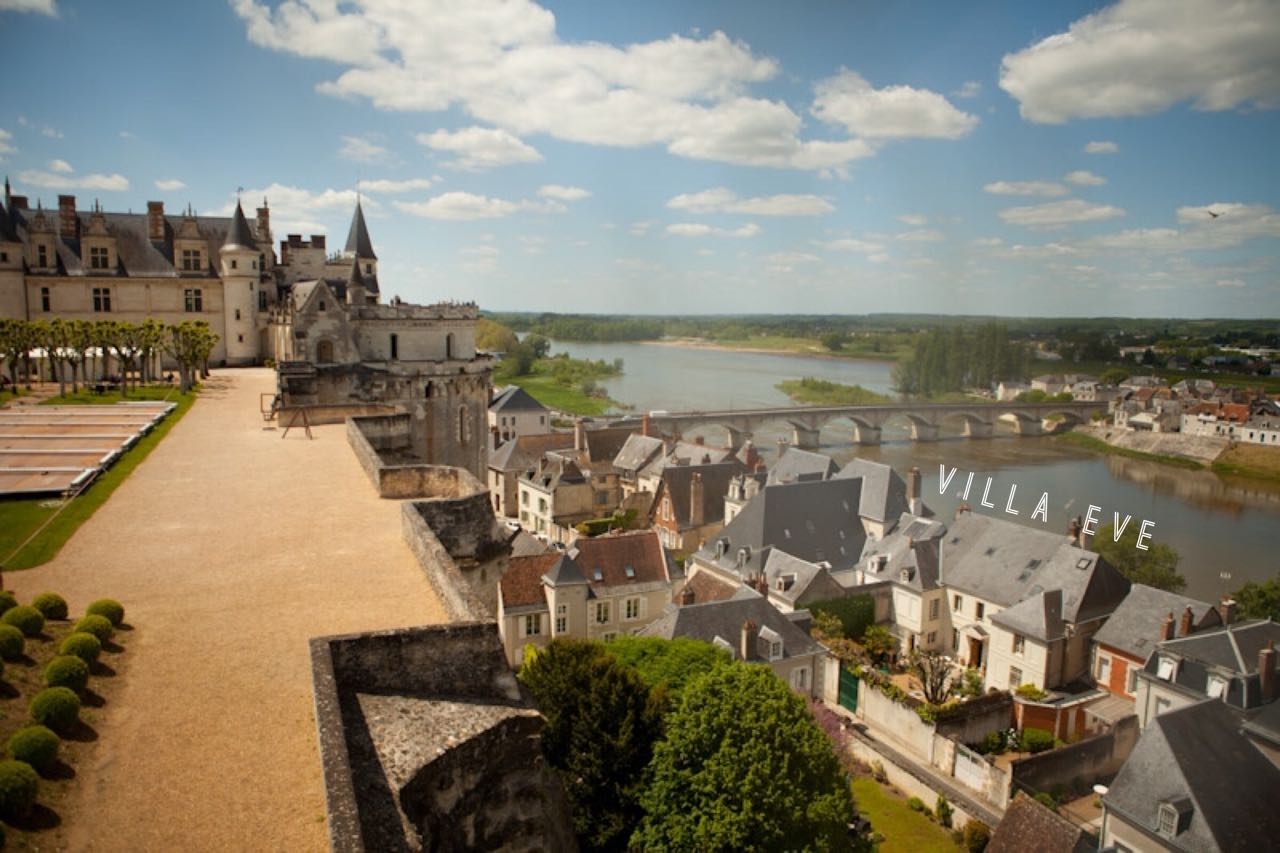
We are fortunate in our accommodations in Amboise: a lavish new listing on airbnb—Villa Eve—that comes cheaply enough because we are the first to review it.
What's not to like? We are a few steps from downtown and as close to the Chateau Royal as any dwelling can get. We have three rooms to ourselves plus a common library. The decor is french country meets modern living. Dark oak beams with iron fittings contrast pleasantly with taupe stucco walls and limestone pavers on the floor. The french penchant for blue and white, plus a number of skylights in the pitched roof, make the old villa feel unexpectedly sunny. Accents like track lighting, antique chairs, espresso machines, china cups, and an old phonograph all reinforce the sense of seamlessness between old and new that is the very essence of France.
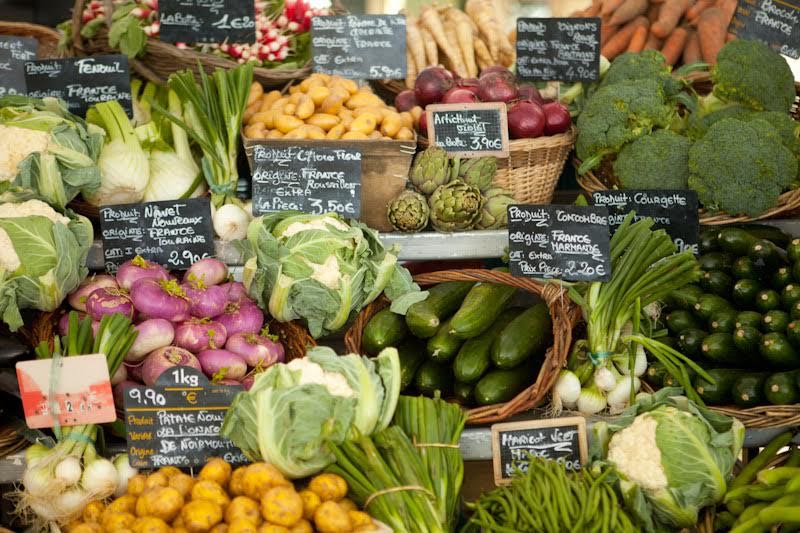
Of course, our kitchen is great. You expect that here. Every morning we have smoked local ham and farm-fresh eggs, espresso, baguettes, thick yogurt and berries. For lunch, local sausage, cheese and veggies. For dinner, roasted potatoes and carrots with herbes de provence and sweet-salty butter. Judging by the average BMI of the man on the street in France, it looks like all the cheese and sausage and butter these people eat is doing them less harm than all the sugar and cheap vegetable oils we eat.
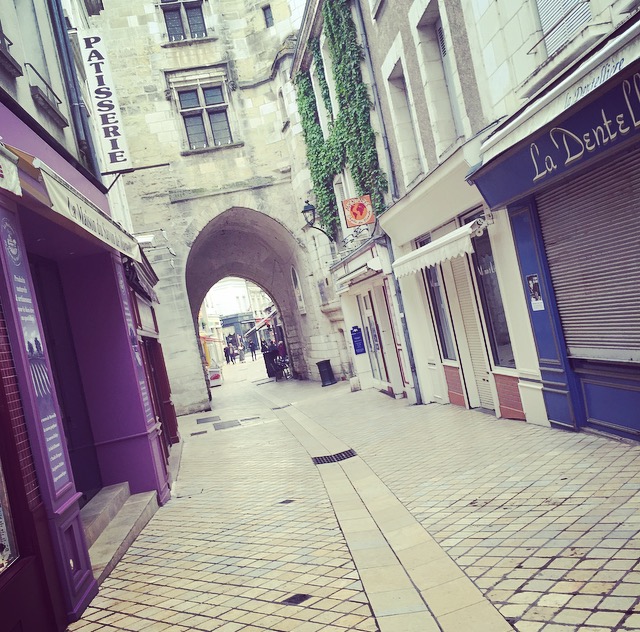
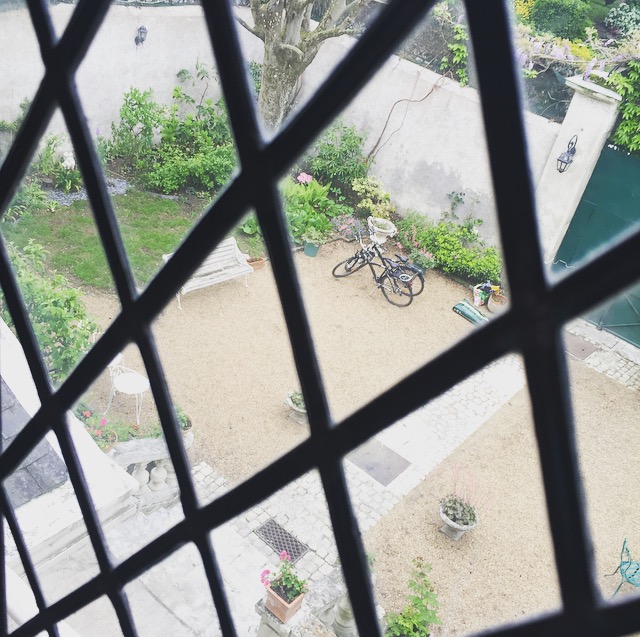
We have bikes and will travel. Already we've had an adventure to the supermarket and back—6 kilometers on narrow roads with bike lanes the width of my waist.
Day 5
Château du Clos Lucé.
Château du Clos Lucé is the home of Leonardo da Vinci, where he spent his last 3 years in friendship with the King of France—Francois I. After running from dangerous patron to dangerous patron in Italy, da Vinci finally finds a peaceful home in Amboise, France. Here he dies, at age 67, a man so far ahead of his time that many of his ideas—the hang glider, the helicopter, the submarine, the tank—will not see the light of day for another 500 years. Fortunately the intervening generations have The Last Supper and The Mona Lisa to ponder while they wait for another genius to be born.
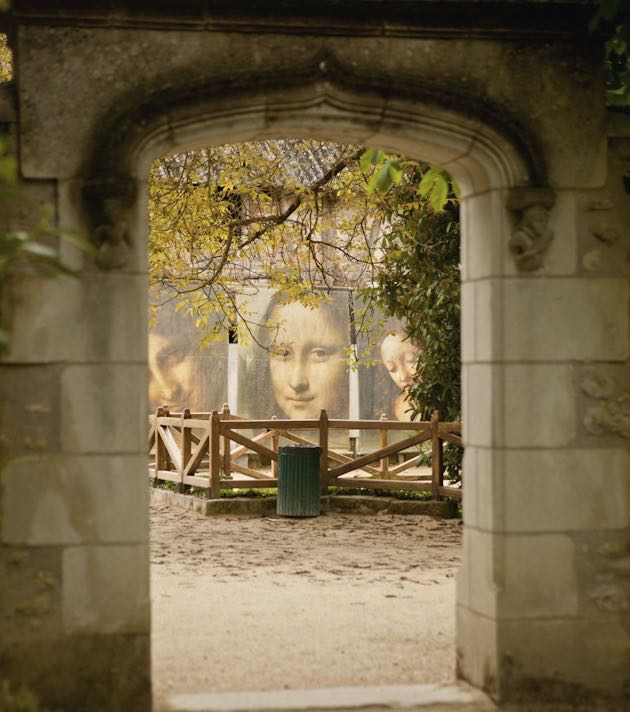
Da Vinci had extensive gardens around his home. He filled unpublished volumes on plant anatomy and physiology before botany was even a science. He sketched the circulatory paths of xylem and phloem before xylem and phloem were a thing. He anticipated the theory of evolution. Was there anything this man couldn't observe and understand? No wonder he was accused of witchcraft by jealous men and feared as a wizard by others (ok, he did have the Gandalf hair). No wonder he had to move from place to place and from duke to duke to maintain employment and safety. Fortunately he was born during the Italian Renaissance so he wasn't burned at the stake. He became famous in his own lifetime and wealthy. And yet he found himself in competition with a certain young upstart he didn't really like, a kid who went by the supercilious name Michelangelo.
Day 6
Castles and Cream.
We are experiencing the psychological time dilation of travel: it seems like a long time ago that we were in Holland, but it's only been a few days. We're not traveling anywhere near the speed of light but our eyes must be gathering in so many novel experiences per unit of time that Einstein's theory still applies somehow. The faster you go, the more time expands, as if it is piling up on itself in puddling waves.
Today is a day of castles and cream. A day of Disney without the Disney. A day at Château royal d'Amboise.
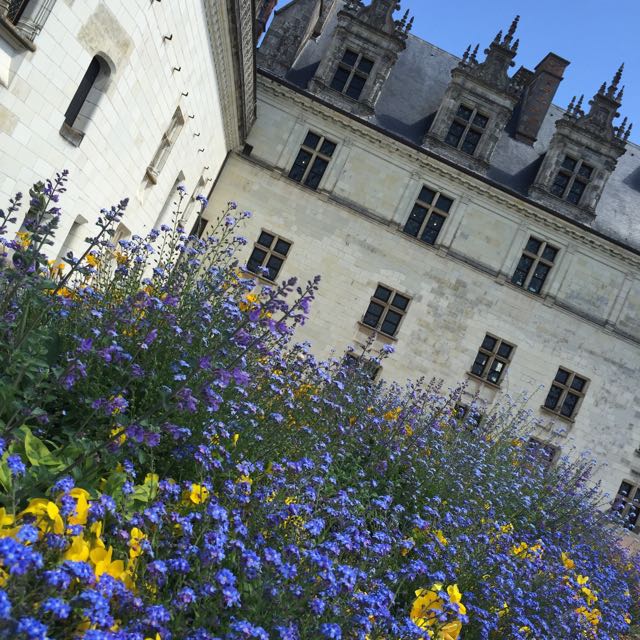
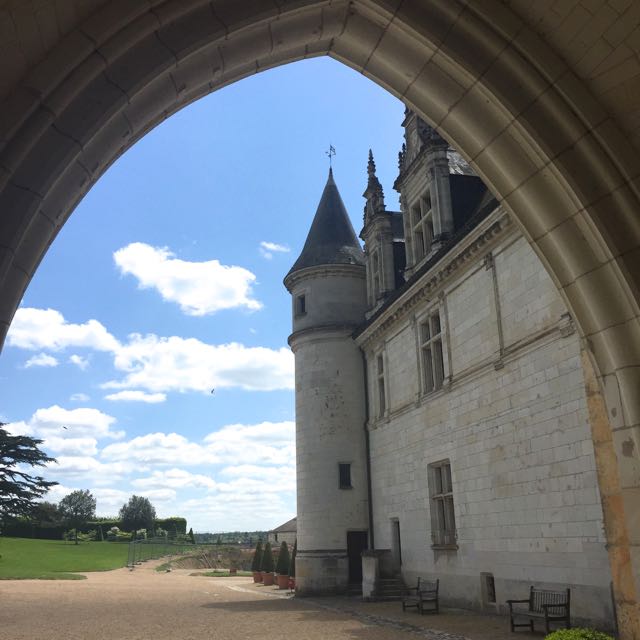
Sadly, only a 5th of the Château's buildings are left standing now after anti-royal sentiment demolished 80% of the castle during the French Revolution (1789). Times have changed. The success of democracy in France is now measured by how lovingly France cares for its own heritage—and its cheese. Its days of flailing adolescence are apparently over.
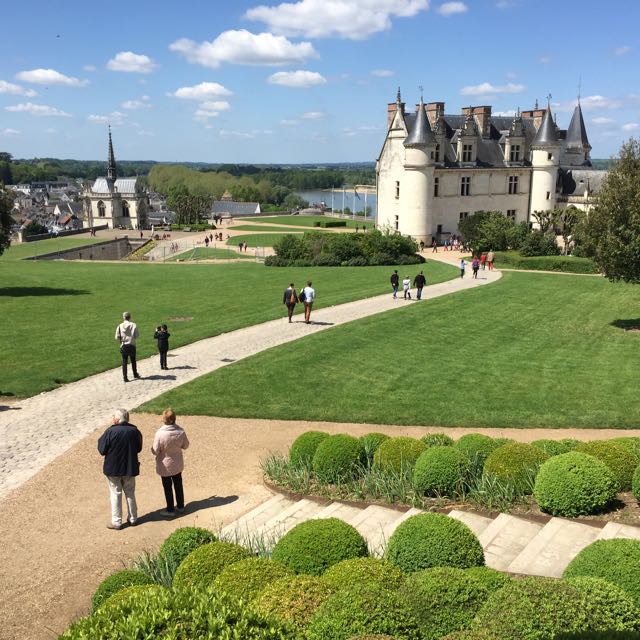
The city of Amboise was the original seat of French government—not Paris—which is why the castle is called the Château royal. The Château was the headquarters of France from the 4th century till the 1550s when, for obscure reasons, Henry IV decided to move court to Paris. The heyday of royal Amboise was 1400-1550s. That's when most of the renaissance structures were built that we now admire...what's left of them. Honestly I'm not sure why Versailles is still standing in Paris. There must have been something particularly symbolic about destroying Château d'Amboise.
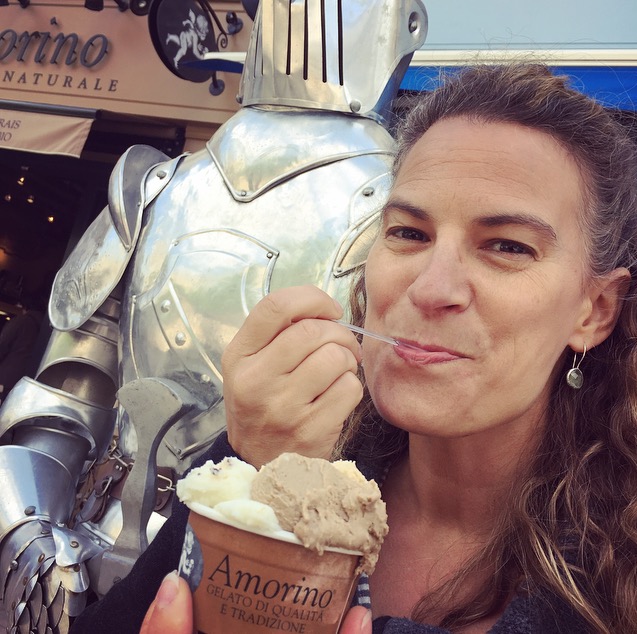
And...let us not forget the cream.
Day 7
Charmond & Chenonceau.
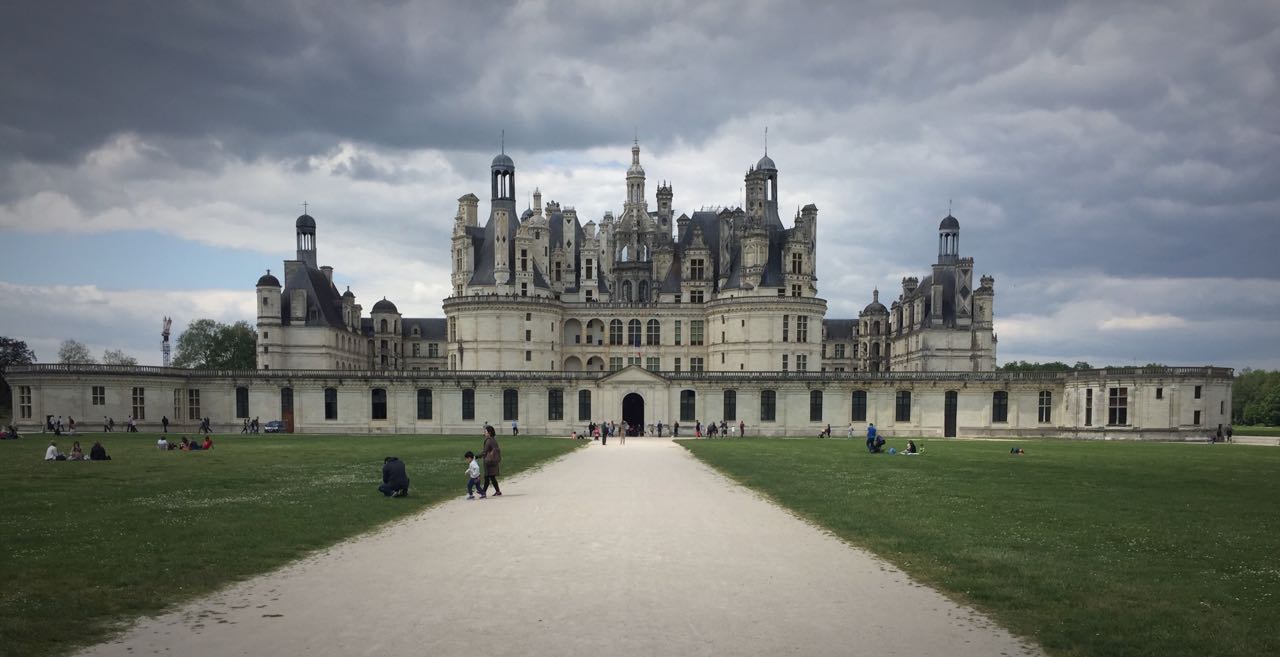
Château Charmond: 400 rooms, 365 fireplaces, and one enormous double-helix staircase—on 13,000 acres. It was only a hunting lodge. Nobody ever lived here.
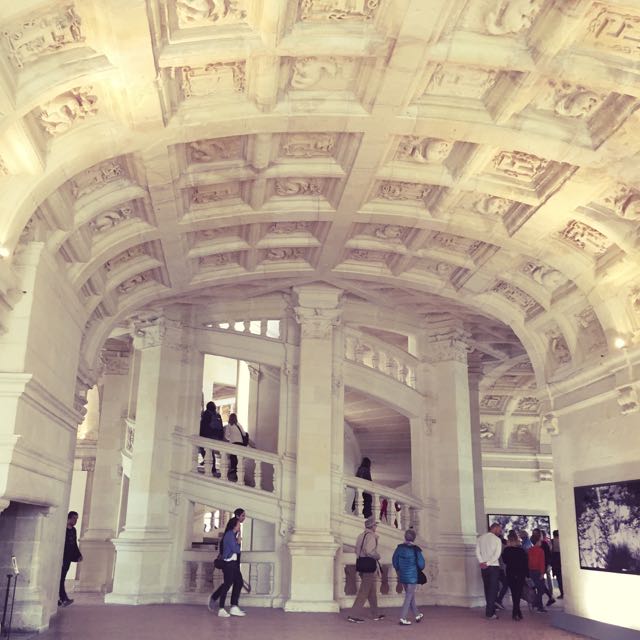
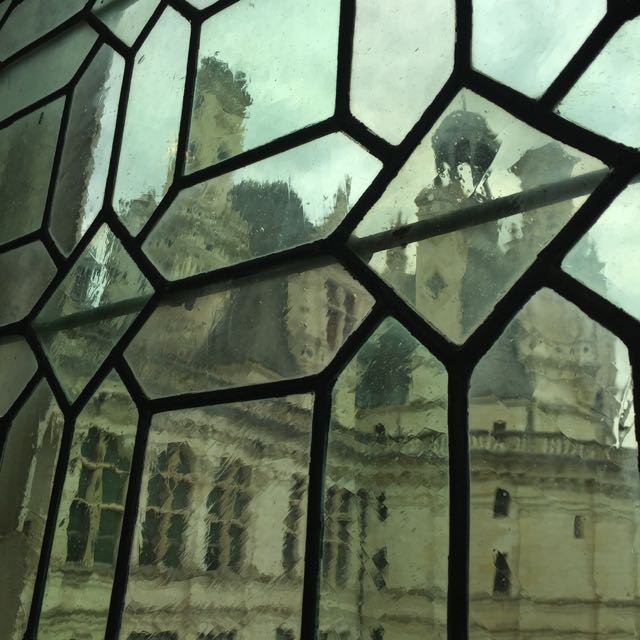
Pretty nice diggs for a hunting lodge. No wonder the tax payers got pissed.
And now for something completely different... Chenonceau: a woman's touch.
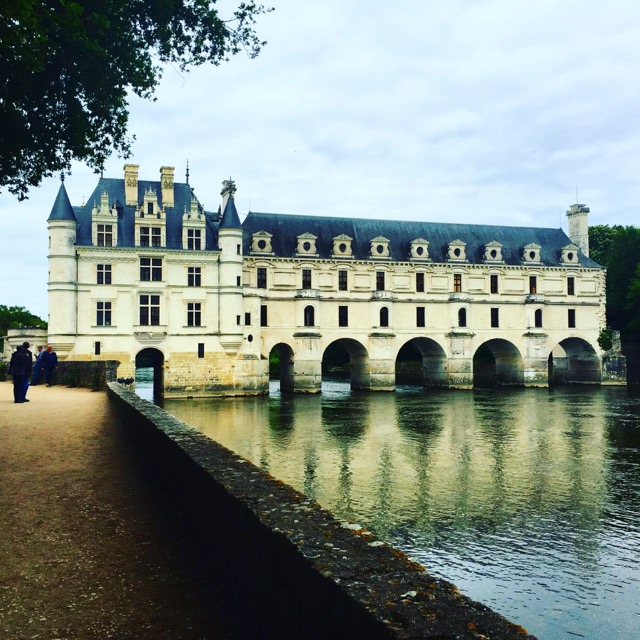
This is about as far removed from the sprawling and masculine hunting lodge of Chambond as you can get. Chenonceau was designed by women—3 women to be exact—in series: one hot mistress, one jealous queen, and one white queen. Each added her own touch as the château grew over the years from just the square floor plan on the left bank to the eventual river-spanning piece of elegance you see here. What you can't see in this picture are the massive gardens and miles of paths in the woods to the left. The house was always stocked with fresh white flowers (and still is) and the kitchen was state of the art for its time, producing fabulous food with surprisingly modern copper-core cookware. Yes. The women were in charge of this one. And the men who ate here were the better for it (sort of).
Why three women? Where were the men? The story goes like this:
King Henry II dies and hot mistress is kicked out by jealous queen, who begins expanding the house and gardens (This is Catherine de Medici in case you are wondering). I say "kicked out" as if Catherine hurls her rival out onto skid row. But no. Actually, Catherine just banishes hot mistress to a "crummy" Chateau downriver, which is only half the size of Chenonceau. It's a demotion, not a demolition. After all, hot mistress is Catherine's cousin, so she can't be too hard on her.
The last woman to inherit the castle comes in with less drama, but goes out with more pathos and mystery. When King Henry III dies, his wife dons white and never takes it off (the traditional mourning garb of the time—a rather nice color for mourning, don't you think?) and she never leaves the castle again. She devotes herself entirely to a life of reading, charity work, and prayer. And white flowers. Rumors abound. She becomes the legendary "white queen", Louise of Lorraine, who may have inspired fairy tale characters like the White Queen by Louise Carroll, Snow White by the Bothers Grimm, and the Snow Queen by Hans Christian Anderson. She may even have inspired the splendid white isolation of Elsa in Disney's Frozen (but I suspect whatever cultural mashup comes out of Pixar is mostly unconscious—or collectively unconscious—the meme of the white queen has been with us a long time).
Day 8
Castles & Cave Dwellings.
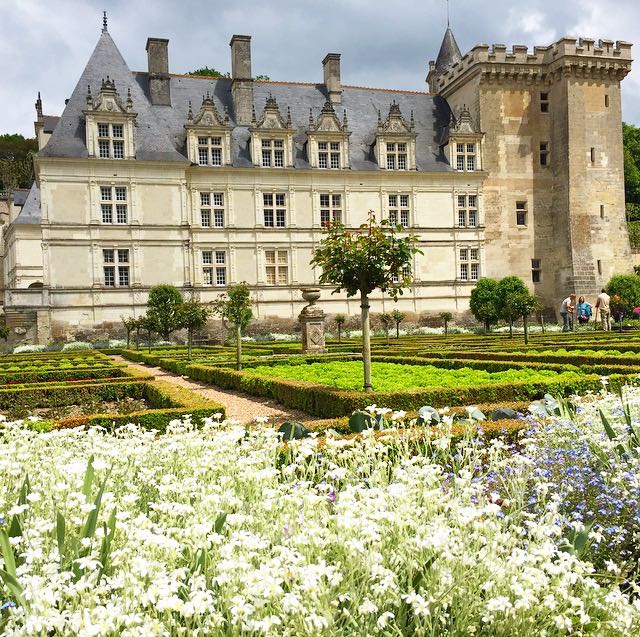
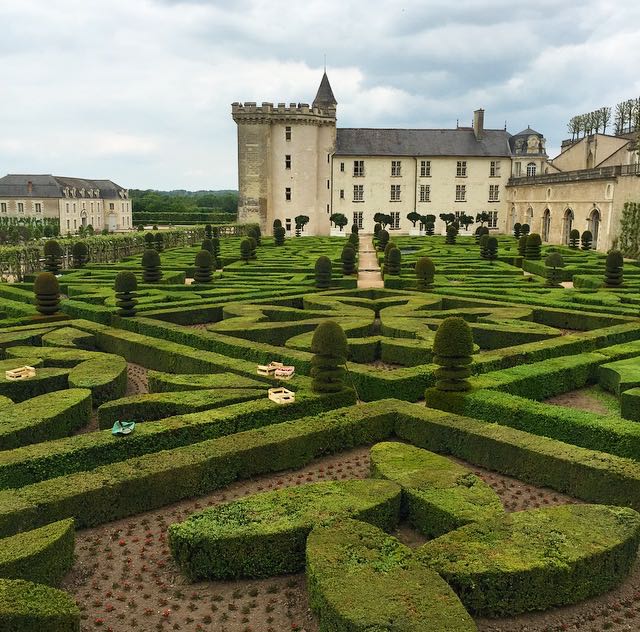
Villandry gardens and Chateau.
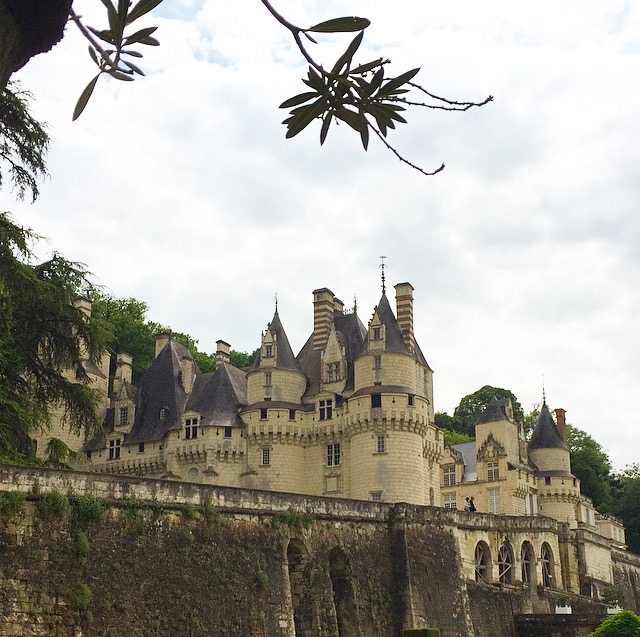
Château d'Ussé: while staying here, writer Charles Perrault is inspired to write "Sleeping Beauty" in the 17th century. A pretty new story by old world standards.
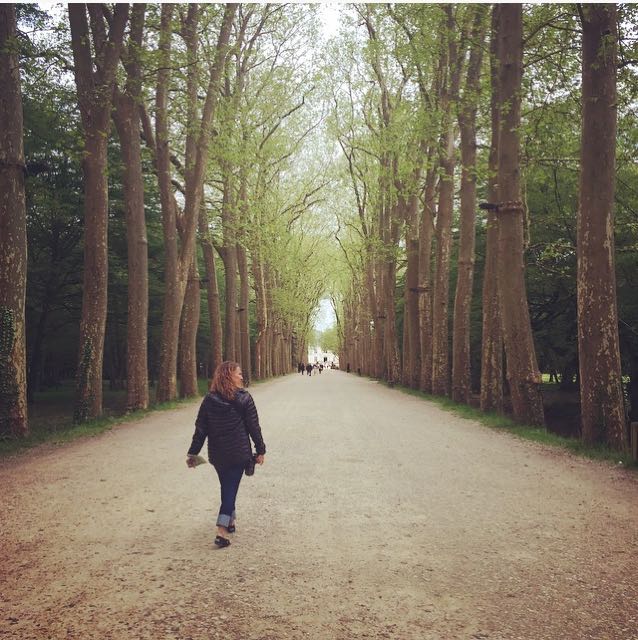
We are going through castles quickly now—the interiors anyway—because the rooms are loaded with the paraphernalia of rich people whose times and taste are impossible to comprehend in an afternoon. They give me a superficial impression, probably because I can only give them superficial attention. To do them justice I would have to read for hours—days—and then walk very slowly through the Loire valley recounting the steps of these people who shaped the history of France (and thus the history of Europe), not just their squabbles and ménages à trois, but their strategies and maneuvers and clever repartee. They may not have been the artistic class or the philosophical class—and certainly none of them were like da Vinci—but they were the movers and shakers, the aristocracy, with all the privileges and responsibility thereto. Love them or hate them, they defended the borders, ennobled the customs and stoked the pride of their people—often dying violently in the process through war or intrigue. God bless 'em, I would rather have been an architect than an autocrat.
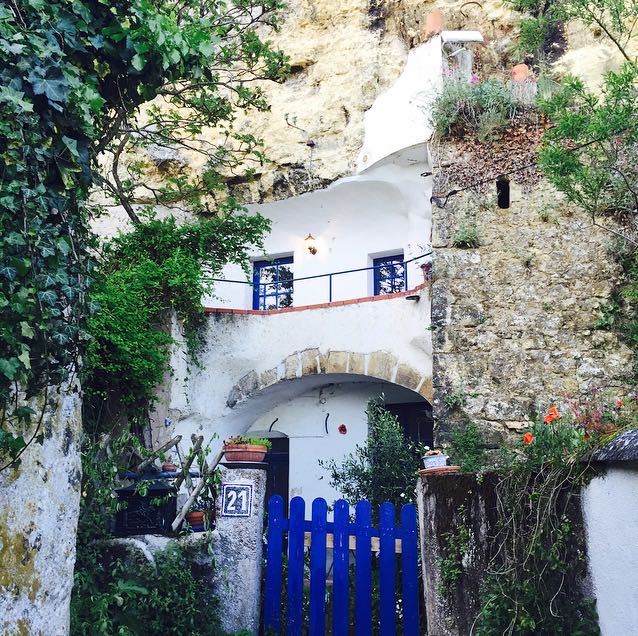
St. Etienne de Chigny: we drive past a hill riddled with doors and windows. It's like a hive of hobbit holes. Half the town lives in troglodyte homes—limestone quarries that have been converted into dwellings with charming french facades. The limestone was removed from these hills ages ago to build the 73 châteaux and fortresses that line the Loire River. The quarries were then abandoned, then used as cheese cellars, and finally turned into homes. In fact, cave dwellings have become something of a trend in modern France. Now it's the chateaux that are passé and the troglodyte homes that are chic. History is funny that way. The homes are energy efficient, both cool in the summer and warm in the winter. Château Charmond, by contrast, was considered too cold and drafty to visit during the winter—even in its heyday with 365 stone fire places roaring! So the French have come full circle: from the paleolithic cave paintings of Lascaux to the alabaster castles of the Loire to the subterranean hamlets of St. Etienne—she has gone back to the future; meanwhile she is happy to sell you tickets to the past.
Day 9 & 10
Planes, Trains, and No Trains.
Our medieval dream comes to an end. It’s time to head back to Paris and then home. Unfortunately, half the trains are on strike (I take back what I said earlier about France’s flailing adolescence being over; the strike seems petty. Even the French think so). What should take 90 minutes by TGV now takes five hours, as well as extra expense and a good deal of hyperventilating over track changes in the rat-maze of the Parisian metro. Finally we arrive at Charles de Gaul Airport, brain dead and constipated—we still have not seen the Eiffel Tower.
So. Here’s the question. Do we get back on the hiccuping train for another 90-minute round trip back into the matrix just to see the Eiffel?
Um…yes.
I hope you've enjoyed our little trip to celebrate 20 years of flourishing. We now return to our regular programming of food, mood, cooking juju, and stories of resilience to inspire you along your own path to health and happiness.
Warmly,
Marc Wagner, MD Only the good, the true, and the beautiful—in food, farming, philosophy & health.
